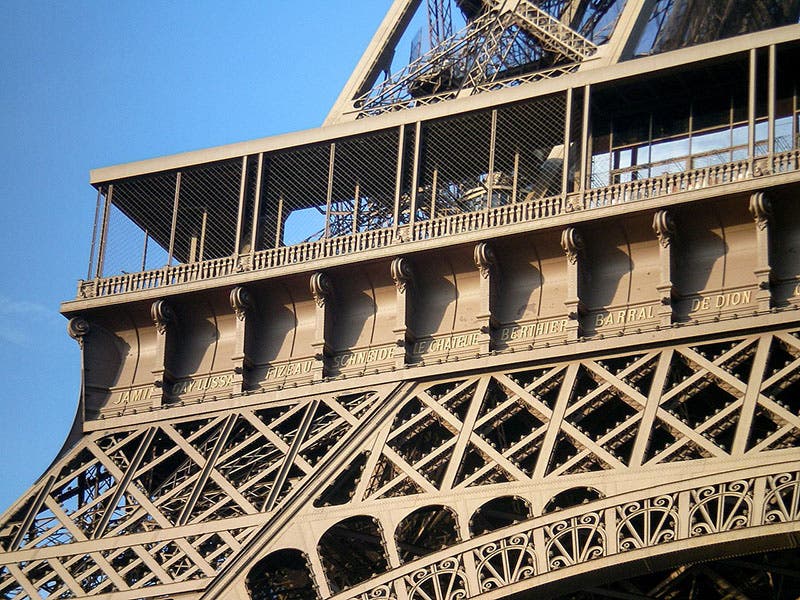Scientist of the Day - Hippolyte Fizeau
Hippolyte Fizeau, a French physicist, was born Sep. 23, 1819. Fizeau was a master at designing experiments, most of them centered around light. He was exposed to photography almost from the moment that Louis Daguerre's discovery was announced by François Arago to the French Academy of Sciences in 1839, and Fizeau undertook his own investigations into how to reduce exposure time, which was around 30 minutes at the time, at which he was successful. In 1845, he and his friend Leon Foucault took a photograph of the Sun, the very first photograph ever taken of the Sun, which showed fields of sunspots quite clearly (the link is to the actual 1845 photograph).
Arago, the secretary of the French academy, who seems to have spent much of his life twisting people's arms, and who had asked Foucault and Fizeau to try to photograph the Sun, asked Fizeau to have a go at measuring the speed of light. Ole Rømer, long before (1676), had measured the speed of light indirectly by studying the moons of Jupiter and the variations in their eclipse times, but no one had ever measured the speed of light with an Earth-based experiment, After all, it takes light only one thousandth of a second (one millisecond) to go from Paris to Antwerp, so the time it takes to traverse your lab bench would seem too small to measure. Fizeau had the idea of setting up a mirror at his parents’ estate in Suresnes, a little over 5 miles from his place in Montmartre. He aimed a beam at the mirror, but first it had to go through a gap in a rapidly rotating toothed wheel. In the time it took the light to go to Suresnes and back, the wheel would have rotated a fraction and the returning beam would be cut off. By adjusting the rotation speed of the wheel, Fizeau was able to find a speed at which the light would travel out through one gap in the wheel, and return through the next, which would have rotated into position in the time it took the light beam to travel to Suresnes and back. With this information, it was a simple matter to calculate how long it took the light to travel the 10-mile distance, and from that calculate its velocity. He came up with a velocity of 195,000 miles per second, which was a little high. But improvements in technique by others would soon provide the modern figure of 186,000 miles per second.
The speed of light measurement was done in 1849. In 1850, Fizeau successfully measured the speed of light in water, found that it was less that the speed in air, and concluded that light must be a wave – if it were a particle, it would have moved more rapidly than in air. Thus he settled a debate that had raged ever since Isaac Newton had declared that light is particulate and Christiaan Huygens had maintained that light is a wave.
In 1889, when the Eiffel Tower opened, it had the names of 72 French scientists carved into a frieze that ran around just below the first level (we have mentioned this several times in previous posts on Gustave Coriolis and Charles-Augustin de Coulomb). Not only was Fizeau included, but he was the only one of the 72 scientists who was still alive when the Tower opened. He is on the southwest side (the Grenelle side), third from the left (second image)
The photograph of Fizeau (first image) was taken by Eugène Pirou in 1883. Fizeau died in 1896, just shy of his 77th birthday.
Dr. William B. Ashworth, Jr., Consultant for the History of Science, Linda Hall Library and Associate Professor emeritus, Department of History, University of Missouri-Kansas City. Comments or corrections are welcome; please direct to ashworthw@umkc.edu.







